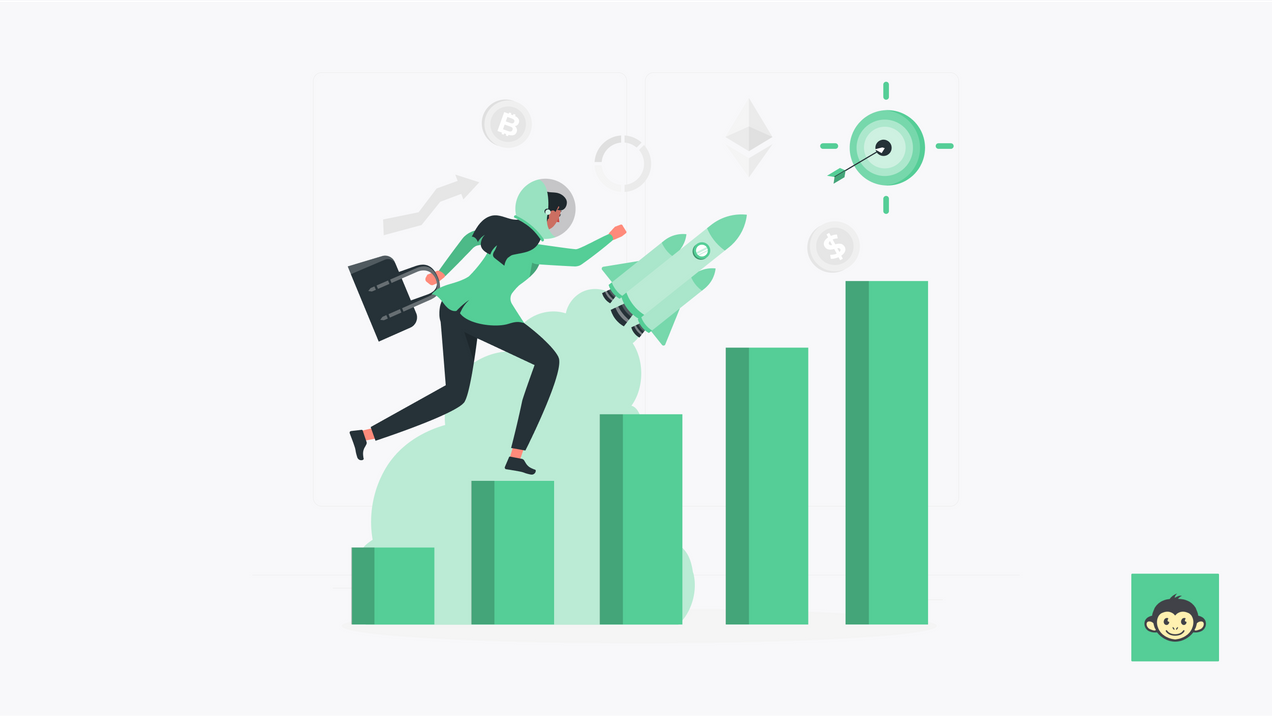Why workforce optimization is the key to high-performing, happy teams

Imagine a city traffic system during peak hours. When signals are well-timed, roads are properly marked, and every vehicle follows its lane, even a jam-packed street moves steadily.
But remove coordination, and the same street turns chaotic—honking, delays, frustration.
That’s exactly how a workplace functions without workforce optimization. People may be skilled and motivated, but without structure, clarity, and smart allocation of tasks, productivity stalls, and stress builds up.
Optimizing your workforce is like setting the green lights in sync—it keeps things flowing, reduces friction, and gets everyone where they need to be, faster and happier.
TL;DR
What is workforce optimization, and why does it matter in 2025?

TL;DR
Workforce optimization in 2025 aligns people, tasks, and business goals through AI and real-time analytics, ensuring work is efficient, flexible, and human-centric.
It’s essential for adapting to fluid work structures, preventing burnout, and enabling data-driven decisions. With AI reshaping planning and performance, it transforms how teams operate—balancing cost, capacity, and care at scale.
Workforce optimization is a strategic approach that ensures the right people are doing the right work at the right time, efficiently and effectively.
It uses workforce data analytics, AI, and automation to align employee output with business goals defined in the business strategy, improve performance, and create a more balanced, agile, and productive workplace without sacrificing employee wellbeing.
1. Work isn't just hybrid, it's fluid
In 2025, roles, schedules, and workspaces are more flexible than ever. Workforce optimization helps businesses adapt to this fluidity by enabling smarter staffing and workload allocation, especially when trying to optimize remote workforce dynamics across teams and time zones.
2. Burnout and attrition are business risks
With employee expectations shifting fast, organizations can’t afford to overlook wellness. Workforce optimization solutions bring transparency to workloads and streamline time off requests, help prevent employee fatigue, and reduce the chance of silent disengagement, ultimately enhancing employee efficiency.
3. Businesses need to do more with less
Efficiency is no longer a nice-to-have—it’s a must. With workforce optimization tools, companies can maximize productivity without adding overhead, leading to increased productivity, making performance optimization in the workplace sustainable and measurable.
4. Decisions need to be data-backed
Gut feeling doesn’t scale. In 2025, workforce optimization software relies on real-time workforce data analytics to make staffing, scheduling, and planning decisions smarter and more responsive to changing conditions.
5. AI is no longer optional
AI for workforce optimization is shaping how teams are built, how tasks are assigned, and how success is measured. The strategy involves automating processes and surfacing patterns leaders might miss, giving managers more time to lead rather than just manage spreadsheets.
The evolution of workforce optimization: From tracking to trust

TL;DR
What once meant surveillance now stands for support. Workforce optimization has shifted from micromanagement to proactive enablement, fueled by real-time data and empathy.
Modern tools help spot burnout risks early, distribute workloads fairly, and align team effort with strategy, making it less about control and more about building trust and performance from the inside out.
Workforce optimization didn’t start out as the friendliest phrase. A decade ago, it was mostly synonymous with tracking keystrokes, rigid schedules, and time clocks that cared more about “butts in seats” than actual output. It was all about monitoring, measuring, and squeezing every drop of productivity from employees, often at the expense of morale.
But fast-forward to 2025, and that old-school mindset doesn’t cut it anymore. The game has shifted from control to collaboration. Today, workforce optimization solutions are less about surveillance and more about enablement and enhancing organizational effectiveness.
With the help of workforce optimization software and AI for workforce optimization, companies are moving away from reactive management to proactive support, empowering people rather than micromanaging them.
The new era is built on trust, transparency, and real-time data. Organizations now use workforce optimization tools to balance workload, spot burnout risks early, and ensure team alignment, not just track attendance. Thanks to smarter workforce data analytics, it’s about optimizing the entire work experience, not just squeezing out extra output.
This shift also reflects a bigger truth: high-performing teams don’t need to be policed. They need to be supported.
And the more companies use technology to foster trust instead of enforcing control, the more likely they are to see real performance optimization in the workplace, without pushing people to the edge.
Key components of a workforce optimization strategy
A solid workforce optimization strategy isn’t about doing everything—it’s about doing the right things with intention. In 2025, it's not enough to just schedule shifts and call it a day. Modern optimization is holistic, data-driven, and human-focused.
Here are the core components that make it all work:
- Smart scheduling and forecasting: Matching labor supply with demand starts with accurate forecasting. By using workforce optimization software, organizations can predict staffing needs more precisely—whether in-office or to optimize remote workforce setups—and avoid both under- and over-staffing headaches.
- Real-time workforce data analytics: Gone are the days of relying on past quarters for insights. A winning strategy uses real-time customer data to monitor productivity, engagement, and workload distribution, making continuous performance optimization in the workplace achievable, not theoretical.
- AI-powered decision-making: AI for workforce optimization helps analyze patterns, predict bottlenecks, and automate routine tasks. It doesn't replace humans—it enhances decisions, giving leaders faster, more informed ways to manage workforce performance.
- Employee engagement and feedback loops: Optimization isn’t just about output—it’s about input, too. Listening to employees through surveys and feedback tools keeps them involved and ensures strategies reflect on-the-ground realities, not just top-down assumptions.
- Skill and capacity planning: Workforce optimization tools assess current skillsets, identify gaps, and help plan for future needs. This ensures the right people are in the right roles, and teams aren't overburdened or underutilized.
- Policy and compliance alignment: A strategy that ignores legal and ethical boundaries won’t last. Modern workforce optimization solutions come built with compliance frameworks to help businesses stay aligned with labor laws, work-hour policies, and internal equity goals.
The role of data and analytics in workforce optimization

TL;DR
Data now drives every decision in workforce optimization. Real-time analytics uncover productivity gaps, enable predictive planning, and personalize workforce strategies to meet evolving team needs.
By continuously monitoring KPIs, leaders can shift from reacting to leading with precision—ensuring that workforce decisions align with both present needs and future opportunities.
Data and analytics play a crucial role in transforming workforce management into a precise, proactive, and people-centric activity by focusing on key metrics. Modern workforce optimization solutions lean heavily on real-time workforce data analytics to shift from reactive problem-solving to evidence-based decision-making.
In this data-driven landscape, every decision is smarter, and every outcome is measurable.
- Informed decision-making: Real-time data provides clarity on current workload, employee performance, and trends over time. Leaders use workforce optimization software to pinpoint bottlenecks and address gaps quickly. This systematic approach ensures decisions are rooted in solid evidence rather than mere assumptions.
- Predictive insights: Analytics enables organizations to forecast future trends and demands accurately. With the power of AI for workforce optimization, companies can predict scheduling needs, capacity challenges, and even potential risks before they escalate. This forward-looking approach supports smoother operations and better resource allocation.
- Enhanced efficiency and productivity: Data helps uncover inefficiencies that might be hidden in traditional management systems. By leveraging workforce data analytics, businesses can implement targeted interventions to streamline processes and drive performance optimization in the workplace. This drives productivity without compromising employee wellbeing.
- Tailored workforce strategies: Every organization is unique, and data allows for customization. Insights from workforce optimization tools facilitate the creation of targeted strategies that cater to specific team dynamics, cultures, and individual roles. This tailored approach ensures every decision aligns with long-term business goals.
- Real-time performance monitoring: Continuous tracking and analysis empower managers to respond in real time. Modern workforce optimization software provides dashboards that display key performance indicators, helping balance immediate operational needs with strategic planning. This monitoring is vital to optimize remote workforce operations and overall team engagement.
How AI is transforming workforce planning and management?

Workforce planning used to mean juggling spreadsheets and guessing future needs. Now, AI has stepped in with sharper tools and smarter logic. From forecasting to engagement, AI for workforce optimization is making workforce planning faster, fairer, and far more efficient.
- Accurate demand forecasting: AI can analyze historical data, seasonality, and market fluctuations to predict workforce needs with precision. This helps businesses avoid under or overstaffing while aligning labor with actual demand, especially critical when you need to optimize remote workforce capacity across multiple geographies.
- Smarter scheduling and shift planning: Forget static schedules. AI-generated rosters adjust dynamically based on employee availability, role requirements, and even fatigue levels. Workforce optimization tools powered by AI ensure the right people are assigned to the right tasks, without human error or guesswork.
- Talent matching and skill mapping: AI assesses individual skills, performance history, and preferences to match employees with roles or projects they’re best suited for. This not only boosts efficiency but also supports performance optimization in the workplace by keeping employees engaged in meaningful work.
- Real-time anomaly detection: Whether it’s a sudden drop in productivity or rising absenteeism, AI spots patterns that managers might miss. Workforce optimization software flags these anomalies early, allowing for immediate course correction before they snowball into bigger issues.
- Personalized learning and upskilling: AI identifies skill gaps across teams and recommends targeted training paths for individuals. This keeps the workforce future-ready and ensures that optimization doesn’t just mean cost-cutting—it means investing smartly in growth.
- Predictive attrition analysis: One of the most impactful shifts is AI’s ability to predict turnover risks based on employee behavior trends, survey sentiment, and engagement metrics. Armed with this data, leaders can take action proactively, preserving talent, morale, and momentum.
Balancing efficiency with employee well-being
TL;DR
Optimization isn't about overworking, it’s about working better. AI and analytics help leaders flag overload, personalize support, and enable flexibility so teams stay productive without burning out.
Today’s tools prioritize mental load and preferences, proving that peak efficiency and employee wellness can (and must) coexist for long-term business sustainability.
Efficiency and well-being shouldn’t be opposing forces—but too often, they’re treated like they are. When workforce optimization is done right, it doesn’t squeeze more work out of fewer people. It helps teams work smarter, not harder. And in 2025, that balance is non-negotiable.
With modern workforce optimization solutions, companies can monitor workloads in real time with accurate tracking. and identify when individuals or teams are overloaded.
This isn’t about task tracking hours—it’s about recognizing unsustainable patterns before they lead to burnout. When used thoughtfully, workforce data analytics ensures output stays high without pushing people past their limits.
AI for workforce optimization is also helping managers become more human in their approach. It can flag signs of fatigue, identify disengagement, and even suggest interventions, like redistributing work or adjusting deadlines. These aren't just efficiency wins; they're wellbeing safeguards.
Importantly, optimization tools now factor in employee preferences and feedback. Whether it’s customizing shift schedules, reducing context-switching, or allowing flexibility to optimize remote workforce routines, these tweaks make a huge difference in how supported employees feel.
Efficiency and well-being can co-exist. In fact, they have to. Because in the long run, exhausted teams aren’t productive—they’re just temporarily compliant. The real win lies in creating systems where people thrive and perform at their best.
Common myths about workforce optimization (and what’s actually true)

Workforce optimization has evolved, but some of the old assumptions still linger. From fears of micromanagement to confusion with workforce management, myths can hold businesses back from embracing smarter systems. Let’s set the record straight on what’s real and what’s just outdated noise.
Myth 1: Workforce optimization is just about cutting costs
Truth: While it can identify inefficiencies, workforce optimization solutions today are designed to enhance productivity and employee experience. The focus is on smart resource use, not squeezing the life out of teams.
Myth 2: It’s only useful for large enterprises
Truth: Businesses of all sizes can benefit from workforce optimization tools. Whether you're a 20-person startup or a global company, streamlining scheduling, aligning talent, and improving performance is relevant and scalable.
Myth 3: It kills flexibility
Truth: Actually, the opposite. With AI and workforce optimization software, organizations can build flexible schedules, support hybrid work, and even optimize remote workforce setups—all based on real customer interaction analytics, not gut feel.
Myth 4: It’s the same as workforce management
Truth: Workforce management handles logistics. Workforce optimization is the strategy behind it—integrating AI, data, and feedback to drive better decisions and long-term growth.
Myth 5: It doesn’t care about people—only numbers
Truth: The modern approach prioritizes people. Tools powered by AI for workforce optimization track not just output, but engagement, capacity, and well-being, making burnout prevention part of the plan.
Workforce optimization vs. Workforce management: What’s the difference?
People often use workforce management and workforce optimization interchangeably, but they’re not the same. One focuses on keeping things running, while the other aims to make them run better.
Here’s a clear breakdown of how the two differ across critical dimensions:
| Aspect | Workforce management | Workforce optimization |
|---|---|---|
| Focus | Day-to-day operations (scheduling, time tracking) | Long-term improvement and strategic alignment |
| Goal | Ensure workforce coverage and compliance | Enhance productivity, engagement, and efficiency |
| Tools Used | Scheduling apps, employee attendance trackers | AI-powered workforce optimization software, analytics tools |
| Approach | Reactive – responds to immediate staffing needs | Proactive – anticipates challenges using workforce data analytics |
| Scope | Operational and administrative | Strategic, covering performance and employee wellbeing |
| Flexibility Support | Basic shift planning | Dynamic planning to optimize the remote workforce and hybrid teams |
| People-Centricity | Process-first | Employee-first with integrated feedback and engagement focus |
KPIs to track in a workforce optimization program

A workforce optimization strategy is only as good as the data behind it. Tracking the right KPIs helps you spot what’s working, what’s not, derive key insights, and where to pivot. These metrics give leaders a clear view of how effectively they’re balancing performance, efficiency, and employee well-being.
- Workforce utilization rate: This measures how effectively time is being used for employee productivity. Low utilization can signal poor task alignment, while overly high rates may lead to burnout—something workforce optimization solutions aim to balance through smarter allocation.
- Schedule adherence: Especially important in roles with defined shifts, this KPI tracks how closely actual work matches scheduled hours. Tools within workforce optimization software can flag frequent deviations and help managers identify systemic issues behind missed shifts or overtime spikes.
- Employee engagement score: Engagement isn’t just an HR metric—it’s a performance driver. High engagement correlates with better output and lower turnover. Integrated surveys in workforce optimization tools offer real-time insights that feed into your broader strategy.
- Turnover and attrition rates: Tracking who’s leaving—and why—helps assess if your optimization efforts are sustainable. Paired with AI for workforce capabilities optimization, this KPI can even predict potential exits before they happen, allowing for timely intervention.
- Forecast accuracy: This measures how close your workforce planning projections come to actual needs. A key success factor in workforce data analytics, high accuracy means fewer last-minute staffing crises and better cost control.
- Productivity per employee: This metric reflects how much output is delivered per person, often tied to revenue or deliverables. It’s central to performance optimization in the workplace and helps measure whether you’re achieving more with the same—or fewer—resources.
What are the deployment options for workforce optimization?

Workforce optimization isn’t one-size-fits-all, and neither are its deployment models. Depending on your size, goals, and tech stack, the way you roll out optimization tools can vary widely. Here are five common deployment options businesses are exploring in 2025:
- Cloud-based platforms: The most flexible and scalable option, cloud-based workforce optimization solutions let teams access tools from anywhere. Ideal for hybrid and remote teams, these platforms offer quick updates, seamless integrations, and lower upfront investment.
- On-premise software: For industries with strict data regulations (like finance or healthcare), on-premise workforce optimization software provides greater control. While it requires more IT involvement, it offers customized security protocols and deeper infrastructure integration.
- Hybrid deployment: A mix of cloud and on-premise, hybrid models suit organizations in transition or with distributed teams. It allows companies to optimize remote workforce operations in the cloud while maintaining sensitive data locally.
- Embedded solutions within existing HR systems: Some businesses opt for optimization modules embedded into platforms like HCMs or ERPs. These workforce optimization tools work seamlessly with payroll, time tracking, and performance management systems, making adoption smoother.
- Managed service providers (MSPs): For companies lacking internal expertise, MSPs offer workforce optimization as a service. These third-party experts handle implementation, monitoring, and reporting, allowing internal teams to focus on strategic goals while still using AI for workforce optimization effectively.
Tech tools that support workforce efficiency and engagement
Workforce optimization thrives when the right tech is in place—not just to streamline work, but to keep people engaged along the way.
In 2025, efficiency isn’t just about time saved; it’s about giving employees the clarity, tools, including scheduling software and autonomy to do meaningful work. Here are some tech categories making that possible:
- Workforce optimization software platforms: These all-in-one solutions bring scheduling, forecasting, performance tracking, and AI insights into one place. Leading workforce optimization tools help align staffing with demand while surfacing real-time data that improves decision-making.
- AI-powered analytics dashboards: With AI for workforce optimization, companies can track trends, flag inefficiencies, and even predict burnout. These dashboards use workforce data analytics to turn raw information into action—fueling better planning and more personalized support.
- Employee engagement platforms: These tools measure pulse surveys, recognition, and feedback loops in real-time. When integrated with optimization efforts, they ensure performance isn’t prioritized at the cost of morale—helping maintain a healthy, high-functioning team culture.
- Collaboration and project management tools: From Asana to Notion to Slack, these platforms support async work, transparency, and smoother task handoffs—especially valuable when you’re trying to optimize remote workforce efficiency across time zones.
- Learning and development tools: Upskilling is key to sustainable performance. Platforms that track skill development, learning paths, and knowledge gaps help drive long-term performance optimization in the workplace by keeping teams relevant and agile.
Culture risks of over-optimization and how to avoid them

Optimization is great—until it crosses the line into obsession. When metrics rule every move, culture can suffer, and so can morale. Here are the biggest culture risks that come with over-optimization and how to avoid falling into the trap.
- Burnout from constant efficiency pushes: Pushing teams to “do more with less” without breaks or balance creates a pressure cooker. Even the best workforce optimization solutions need to include space for downtime and recovery, not just output.
- Loss of trust through over-monitoring: Tracking every move or click can feel invasive, especially in remote environments. Using AI for workforce optimization should be transparent and purpose-driven, not covertly used to micromanage or punish.
- Ignoring employee feedback: When optimization focuses only on data and not human input, resentment builds. Always pair analytics with feedback—surveys, check-ins, and engagement platforms—to keep the human context in the loop.
- One-size-fits-all scheduling: Standardizing everything may feel efficient, but it ignores personal preferences and roles. Use workforce optimization software that allows flexibility and personalization, especially when trying to optimize remote workforce dynamics.
- Undervaluing creativity and deep work: Constant tracking can discourage experimentation and creative thinking. Not all productivity is measurable. Make room for strategic pauses and non-linear workflows in your optimization plan.
- Short-term wins over long-term culture: Over-focusing on KPIs can drive short-term results while quietly eroding team spirit. Sustainable performance optimization in the workplace should balance numbers with culture-building efforts like recognition, team rituals, and open communication.
- Misusing data without context: Workforce data analytics are only as good as the interpretation behind them. If insights are misread or acted on too rigidly, they can backfire. Use data as a guide—not gospel—and always consider qualitative feedback.
How employee survey contributes to workforce optimization with AI-powered employee feedback
TL;DR
AI-powered employee surveys reveal invisible friction and shape real-time actions. By integrating sentiment data into workforce dashboards, leaders can identify risks, forecast disengagement, and tailor support.
The result is a feedback loop where optimization becomes more human. Driven not just by metrics, but by the real voices behind the work.
You can’t optimize what you don’t understand—and spreadsheets won’t tell you how people feel. That’s where employee surveys come in. When paired with AI-powered feedback, they turn opinions into insights and make your workforce optimization strategy smarter and more human.
1. Identifying hidden friction points
Surveys uncover what's not visible in metrics—like poor communication, unclear goals, or lack of support. AI-enhanced feedback systems can detect patterns in employee sentiment, giving leaders a clearer picture of where optimization efforts may be falling short.
2. Driving data-backed action
Modern workforce optimization tools integrate survey feedback directly into dashboards. This means HR and managers don’t just read results—they act on them using predictive suggestions, benchmarks, and real-time trends.
3. Improving engagement through voice and data visibility
When employees feel heard, they’re more likely to engage fully. Regular surveys—especially when backed by AI for workforce optimization—create a two-way loop that connects people strategy to actual team experiences.
4. Forecasting cultural risks early
AI can analyze tone, themes, and frequency in feedback to flag early signs of disengagement or burnout. This proactive approach helps optimize not just tasks but also well-being, especially in efforts to optimize remote workforce dynamics.
5. Personalizing development and support
Surveys don’t just guide organizational decisions—they reveal individual needs too. With integrated analytics, you can offer personalized coaching, L&D paths, and better-fit workflows, key to achieving long-term performance optimization in the workplace.
Conclusion
Workforce optimization in 2025 isn’t about squeezing more out of employees—it’s about creating systems that let people and performance thrive together. With AI, real-time data, and smarter tools, businesses can align efficiency with empathy, flexibility with structure, and goals with employee needs.
But to make this work, leaders need more than dashboards—they need visibility into how their teams feel. That’s where continuous feedback comes in.
Looking to turn real insights into real impact? CultureMonkey helps you optimize your workforce with AI-powered employee surveys, advanced analytics, and actionable feedback loops—so your strategy evolves with your people, not at their expense. Smarter teams aren’t just built—they’re listened to.
Let CultureMonkey help you lead the way.
Summary
FAQs
1. How does workforce optimization improve performance?
Workforce optimization improves performance by aligning employee skills, availability, and workload with business goals. Through real-time data and AI-driven insights from desktop analytics, we can minimize repetitive tasks, it helps identify inefficiencies, reduce manual tasks, and improve task allocation. This leads to better productivity, reduced burnout, and higher employee engagement, ensuring teams deliver consistent results without being stretched too thin.
2. What are examples of workforce optimization tools?
Examples include AI-powered scheduling platforms, workforce analytics dashboards, performance management systems, and employee feedback tools. These workforce optimization tools help organizations forecast demand, track productivity, and improve agent performance while making informed decisions in real time. Platforms like CultureMonkey also integrate feedback into the process, supporting both operational efficiency and employee wellbeing.
3. What’s the difference between workforce management and optimization?
Workforce quality management focuses on day-to-day logistics like scheduling and attendance tracking. Workforce optimization is broader—it integrates strategy, data, and employee feedback to improve productivity and engagement. While management keeps operations running, workforce optimization solutions drive continuous improvement, aligning team performance with long-term business objectives and culture goals.
4. Can AI help with workforce optimization?
Yes, AI for workforce optimization plays a critical role in forecasting needs, automating scheduling, detecting patterns, and identifying risks like burnout. It enables smarter decisions by analyzing vast data sets in real time, helping managers respond proactively rather than reactively. AI enhances both efficiency and employee experience when used responsibly.
5. How do I start a workforce optimization strategy?
Begin by assessing current workforce processes and identifying key performance gaps. Invest in workforce optimization software that integrates data analytics and feedback tools. Set clear KPIs, involve cross-functional teams, and regularly collect employee input. Start small, iterate based on insights, and align optimization goals with both business outcomes and employee needs.
6. Does optimization lead to burnout or disengagement?
Not if done right. Over-optimization can create pressure, but thoughtful use of workforce optimization solutions actually prevents burnout by balancing workloads and addressing capacity issues early. When paired with employee feedback and wellness tracking, optimization becomes a way to support—not exploit—your team, especially in remote workforce environments.



